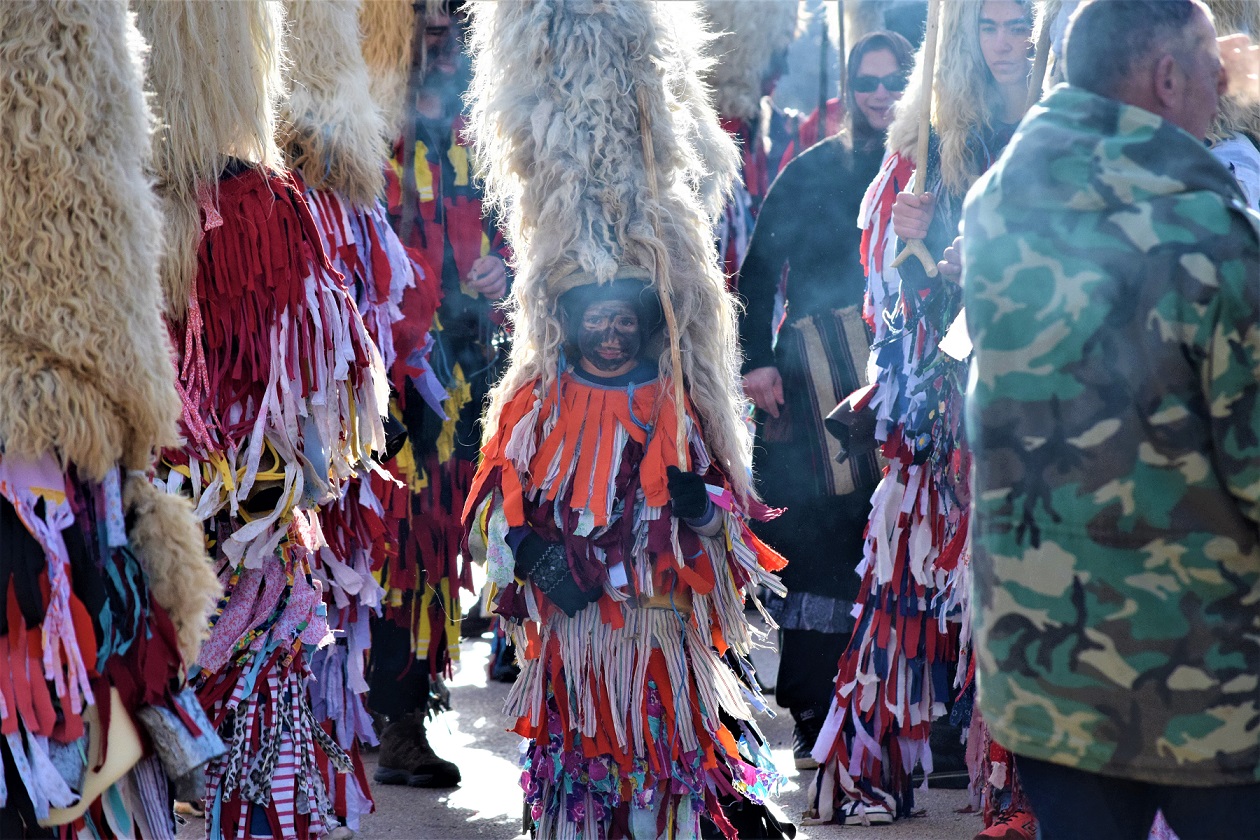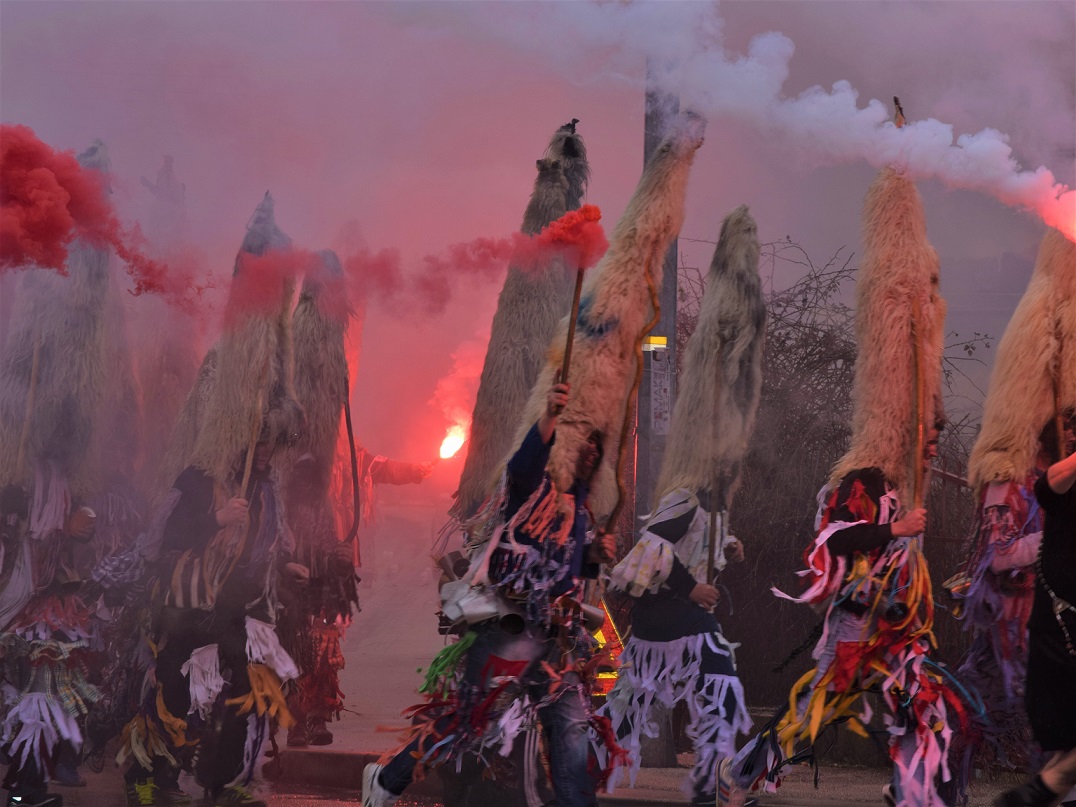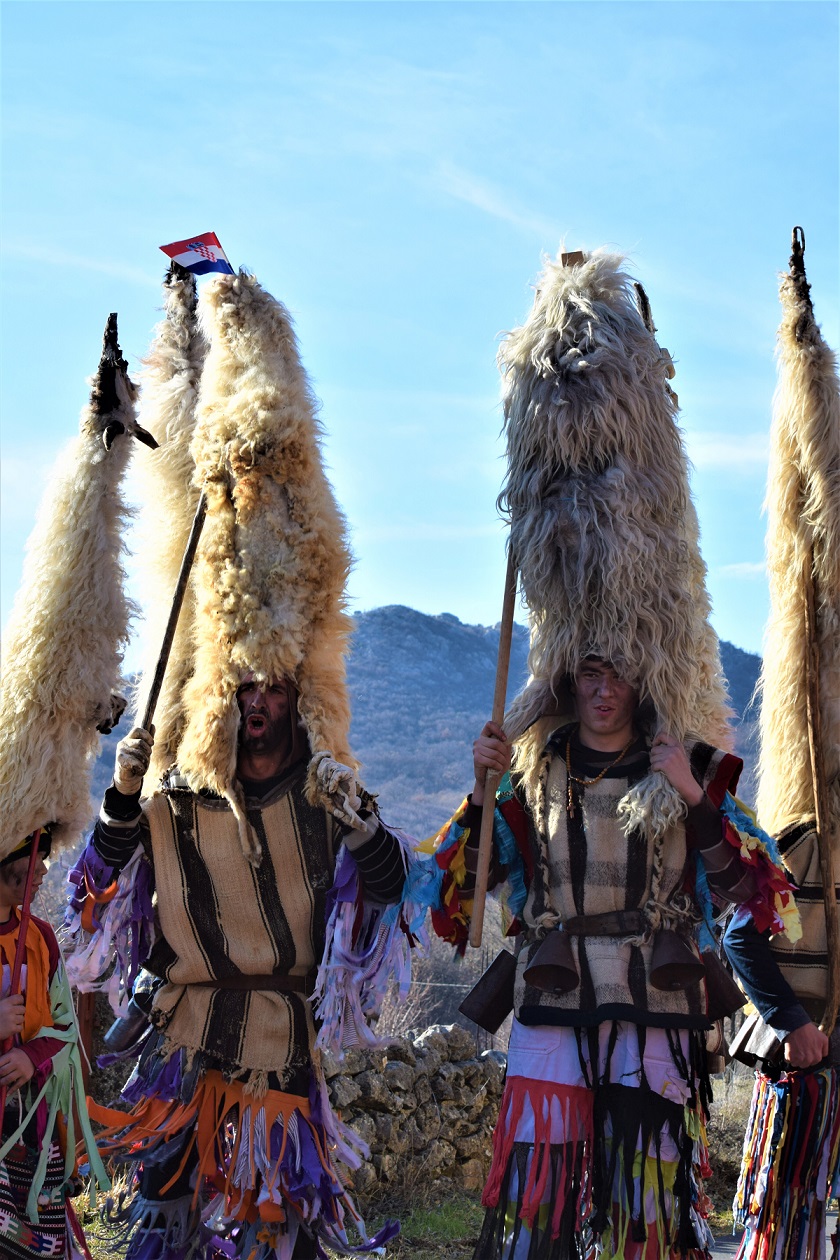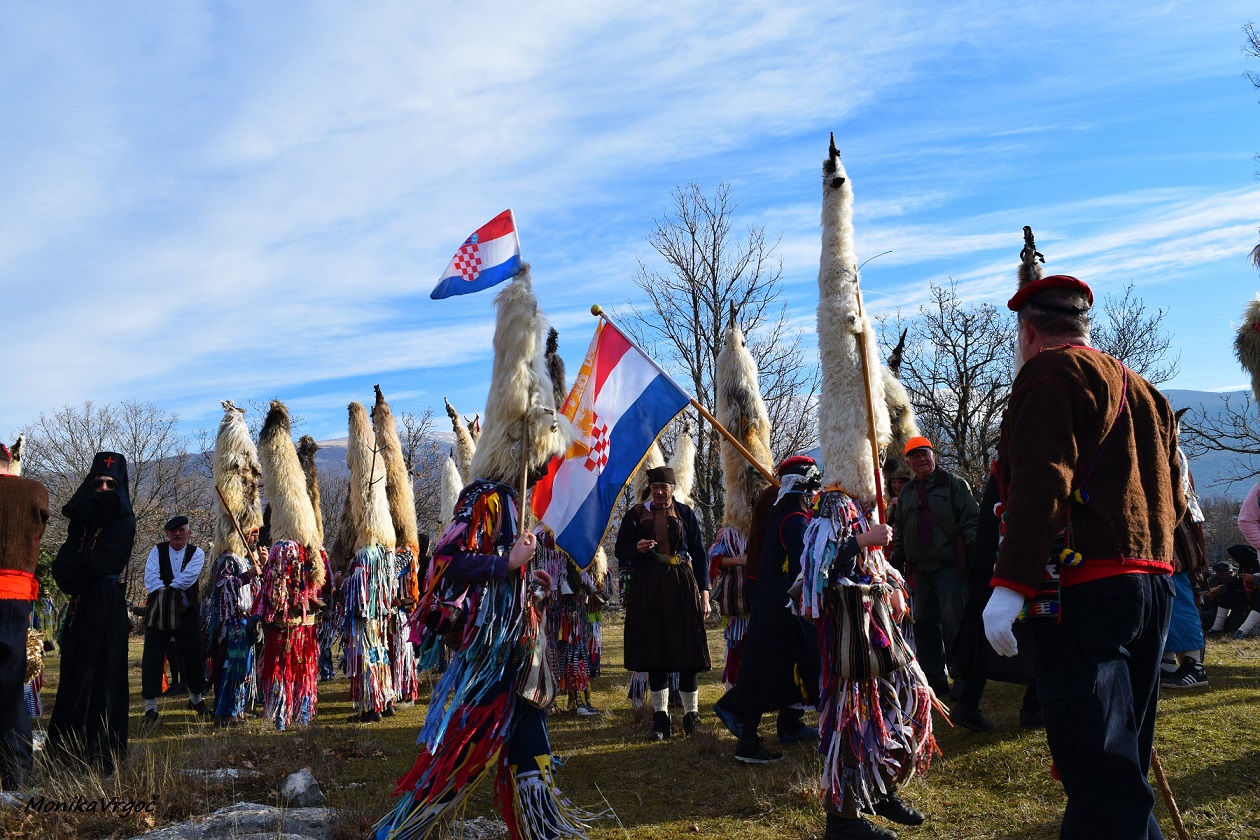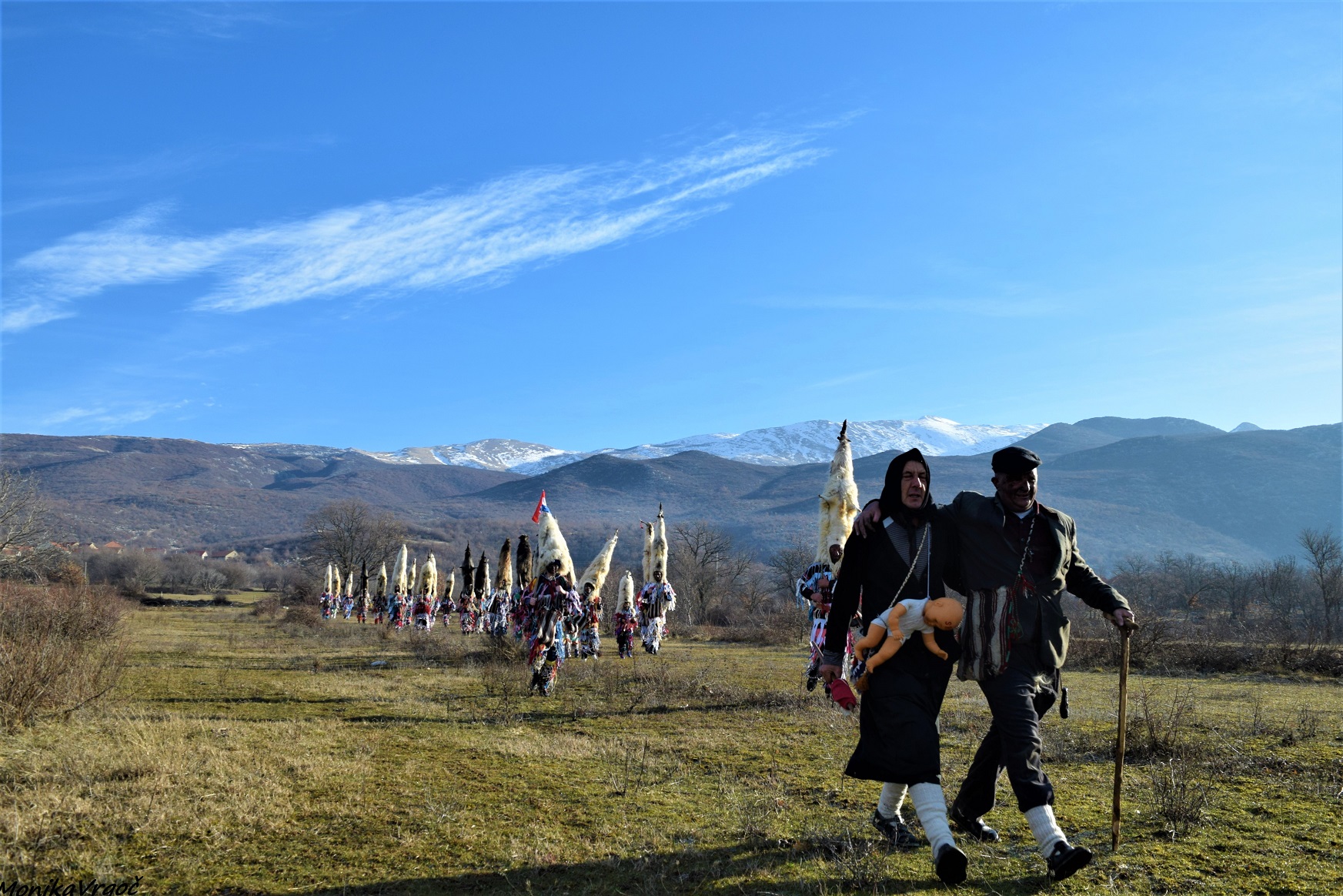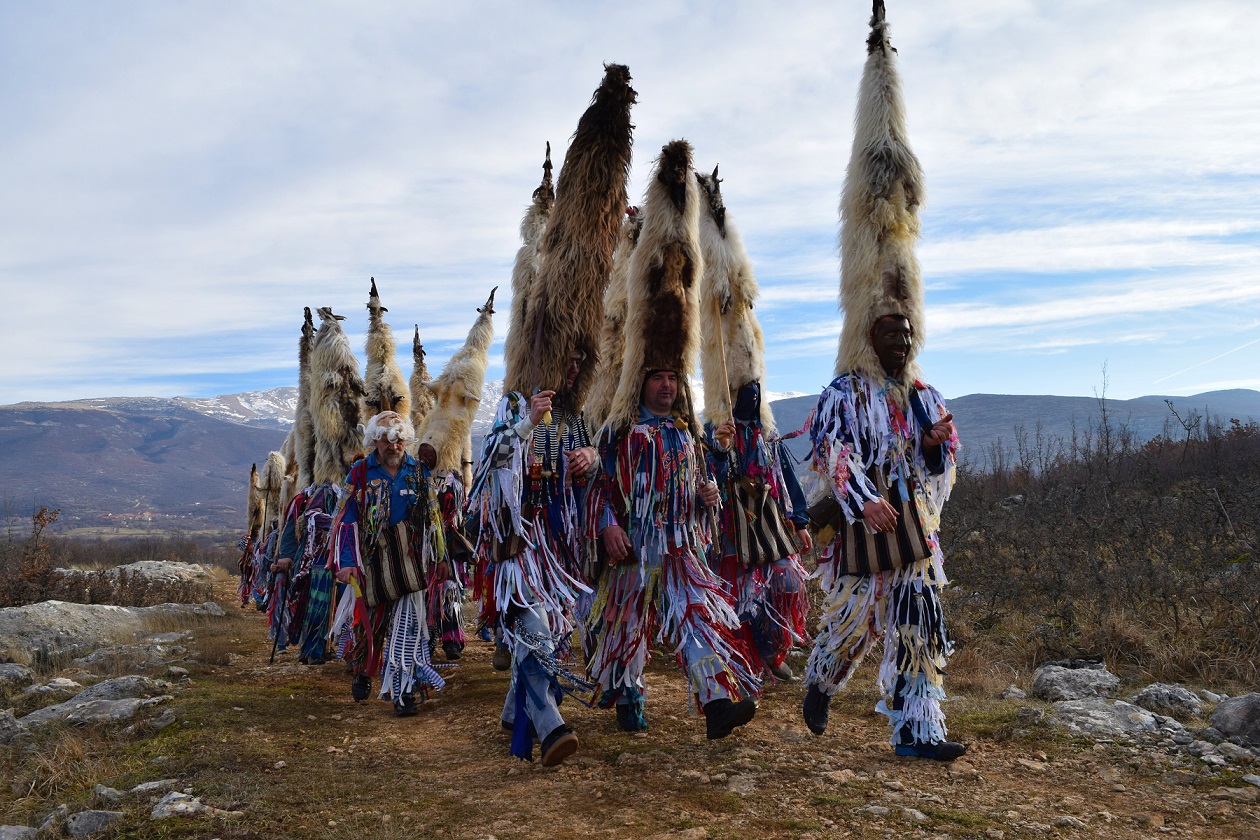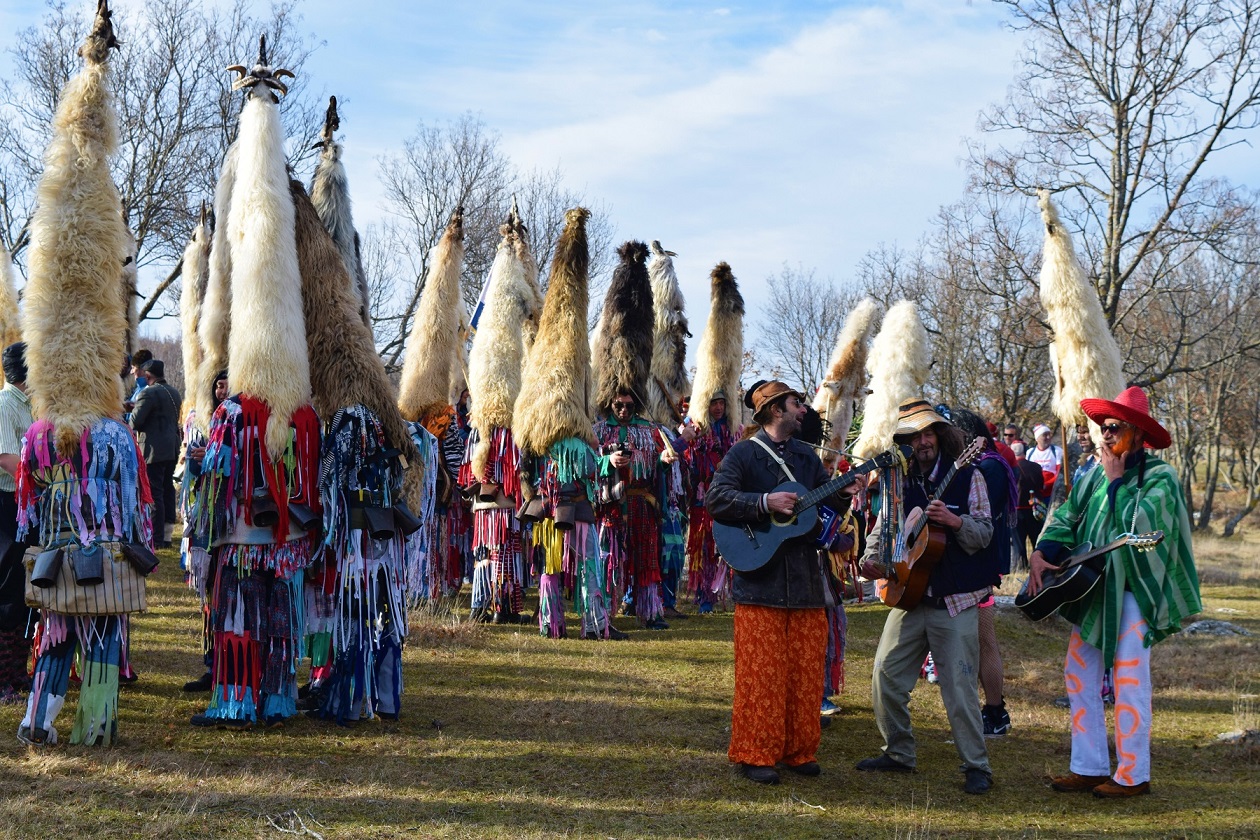Didi s Kamesnice and More Carnival Customs from the Dalmatian Hinterland
February 13, 2021 – Sinj and the Cetina region have long attracted attention with unique and exciting events. One of them is certainly their well-known masquerade festival with 'Didi s Kamesnice', masquerade group from the village of Gljev in the Dalmatian hinterland.
Cetina Region's Masquerade Festival should have been held for the seventh time this year, as well as the centuries-old gatherings of masquerade groups in the Podkamešnica villages, which were supposed to precede the festival and the usual final carnival events. However, due to the ongoing coronavirus pandemic, it was all postponed for the next year.
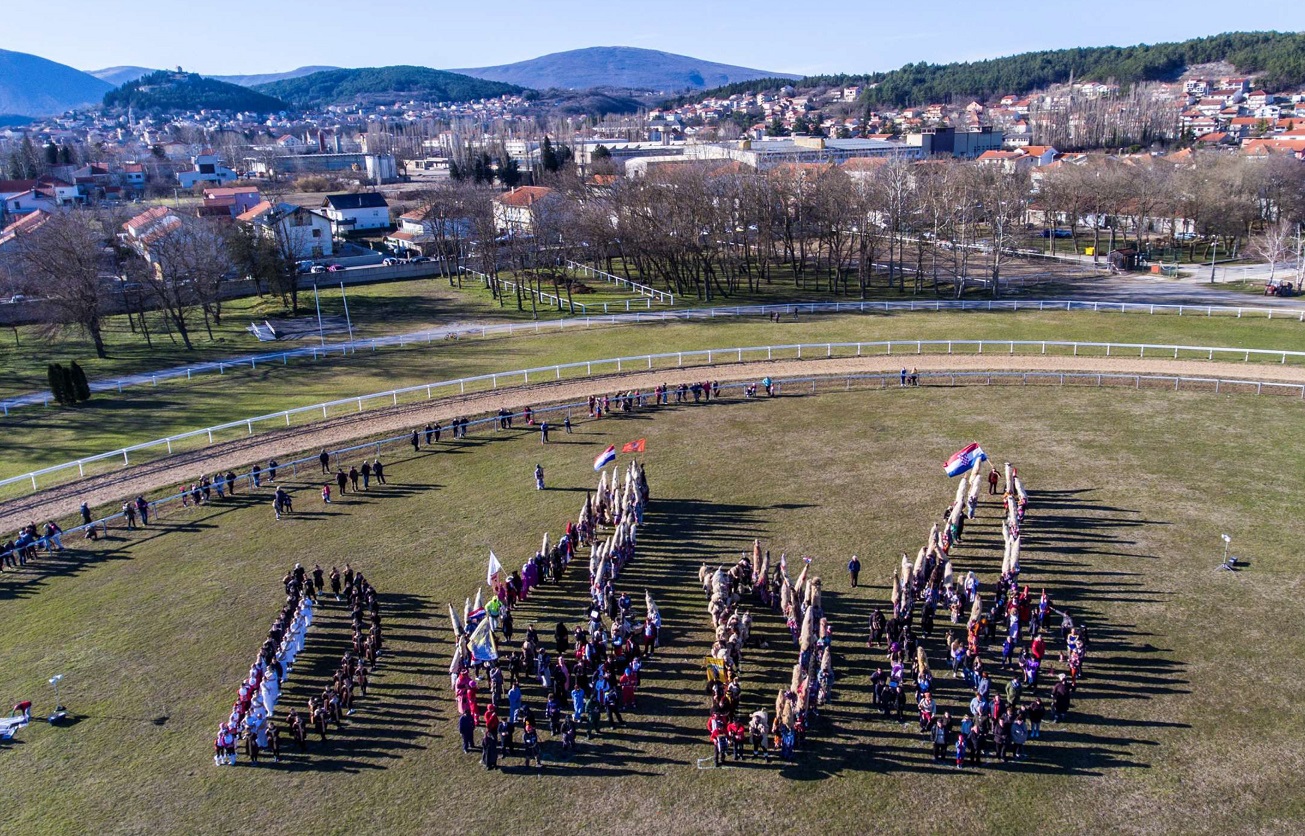
Millennial photo of the Sinj region masquerades - DIDI / Šime Strikoman
At the Festival, numerous masquerade groups present themselves to the general public in one place. The result is a lively, cheerful, colorful, and noisy procession that maintains a long tradition, according to carefully and strictly established rules.
Croatian protected intangible heritage
Masquerades are the best bearers and guardians of carnival customs in the Cetina region. After the Holy Three Kings' feast on January 6, they set out on visits to villages and hamlets. They are even included on the list of protected intangible cultural goods of the Republic of Croatia, which testifies how precious they are.
Podkamešnička villages are villages at the foot of Kamešnica mountain located on Croatia's border with Bosnia and Herzegovina, near Sinj in the Dalmatian hinterland.
In the villages of Gljev, Han, Obrovac Sinjski, Bajagić, and Gala, masquerade processions are a unique and original way of depicting ancient customs interwoven with the sound of masquerade bells and other accompanying rituals.
Masquerade procession in Obrovac Sinjski / Monika Vrgoč
In the municipality of Otok, each hamlet has its own masquerade group (Jelašce, Priblaće, Živinice, Gala, Ruda, Udovičići, and occasionally there are groups Glavičica-Priblaće, Strana with masquerades from Ovrlje and Korita). In the town of Trilj, masquerade processions take place in the villages of Grab, Jabuka, Košute, Vedrine, Vrpolje, Čačvina, and Velić.
Masquerade procession in Otok / Monika Vrgoč
Masquerade procession in Vrpolje / Monika Vrgoč
Driving away winter and bad spirits
The carnival procession's schedule is based on traditional rules, not subject to any changes, and only men participate in it. At the head is a group of white masquerades and wedding guests, then a group of comedies, and finally, with a certain distance, black masquerades.
The wedding party, which symbolizes the end of winter and spring arrival, was once led by the first grandfather (hrv. dida) and nowadays by the flag bearer (hrv. barjaktar).
Gljev / Monika Vrgoč
The masculine, pregnant bride, accompanied by a groomsman, is looking for the groom, which is the procession's main "task."
There are also married women, girls, and other wedding characters dressed in formal attire (folk costume).
Turk commands the masquerades, taking care not to mix white and black wedding guests, who must never be in the same place at the same time. The Turk and the aunt's characters are associated with the long presence of the Ottomans in this area.
Black wedding guests / Monika Vrgoč
Behind the wedding are comedies, a masquerade group that criticizes current social and political topics without sparing criticism.
Grandparents lead black weddings. They are bearers of the fertility cult who, by simulating sexual intercourse, invoke a better and more abundant annual harvest, another indispensable ritual element.
Grandparents in Gljev / Monika Vrgoč
There are also mourners in the procession, mourning widows who shout funny and comic slogans.
The most attractive and impressive part of the procession are the imposing "didi." They wear sheep's wool up to 1.5 m high on their heads and bells around their waists. They are dressed in old clothes sewn with colorful fringes.
They embody the age-old ritual struggle of good spirits with winter, which they drive away with noise and jumping. With the loud ringing of bells, they cast spells from cattle, which, along with fertility and spring arrival, testifies the most important preoccupations of our ancestors.
Monika Vrgoč
Monika Vrgoč
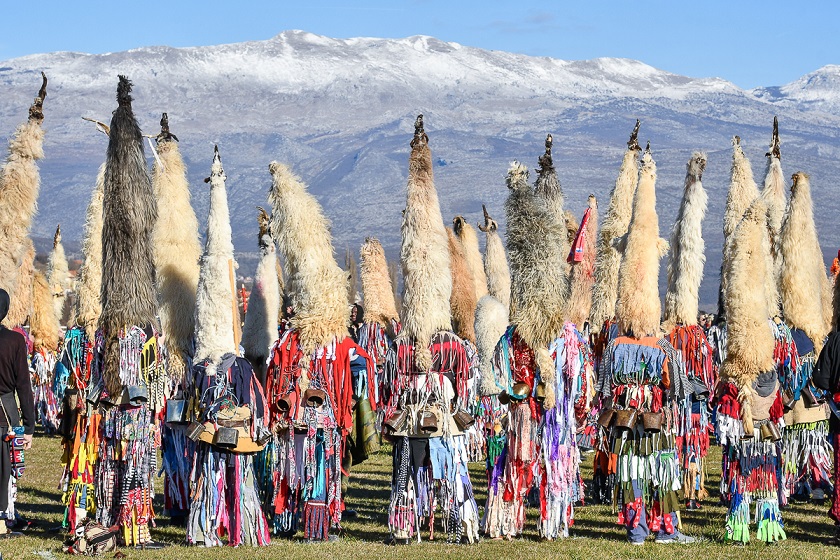
Ivana Pavičić
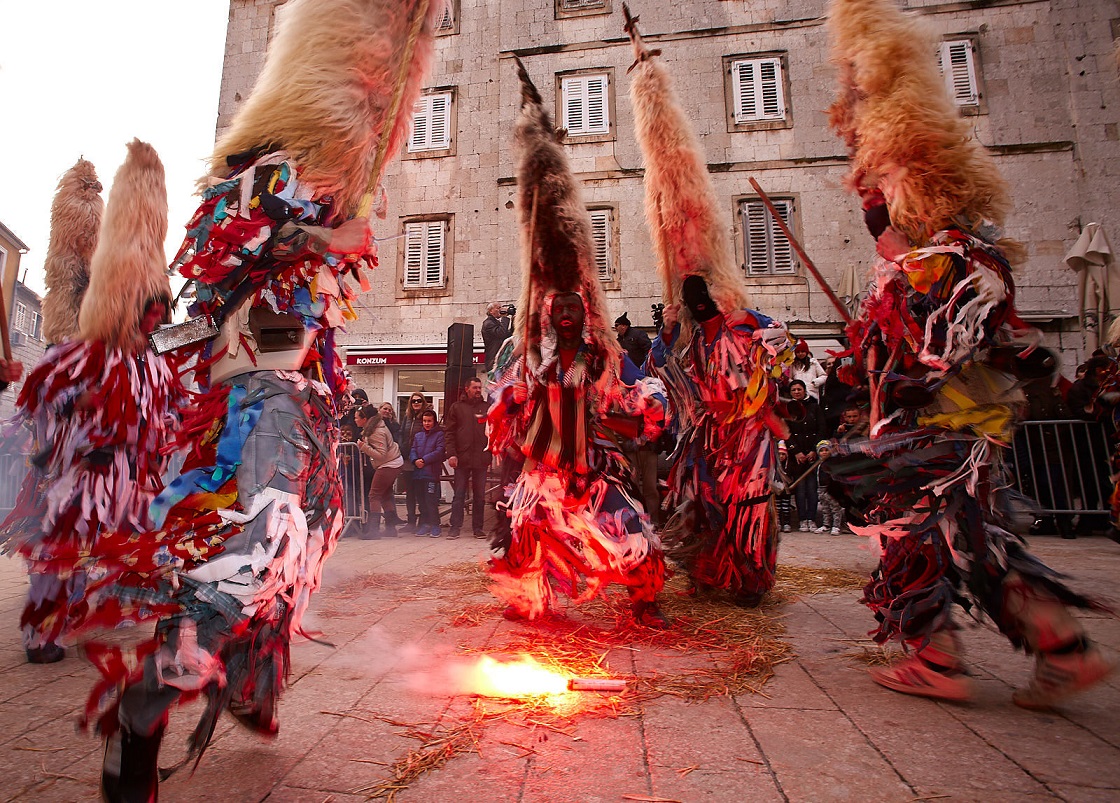
Nikola Belančić
Rich and inspiring carnival tradition
This long tradition of carnival customs, which preserves local identity, is nurtured and promoted by the association "Didi from Kamešnica" from the village of Gljev.
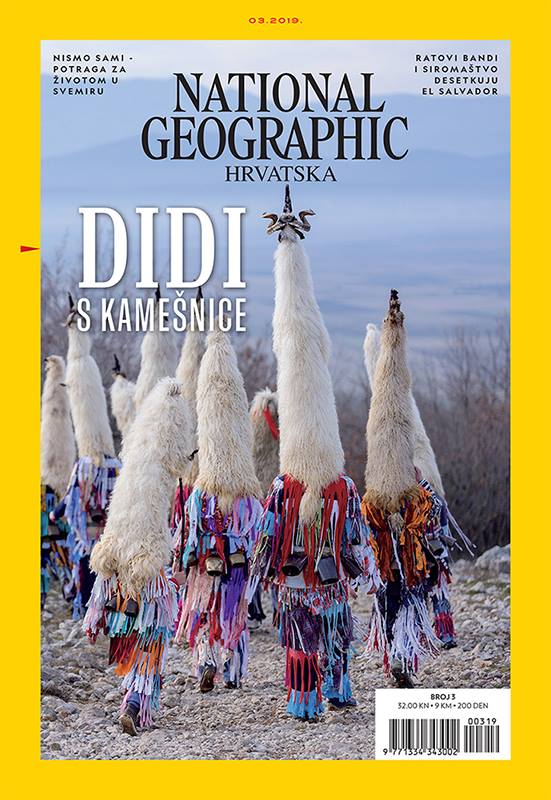
The Cetina region's carnival festival seeks to popularize the rich tradition of carnival customs, unique in Europe. Although carnival customs with similar themes exist in other parts of Croatia and Europe, they always embody the ritual struggle of good spirits with winter.
Therefore, "Didi" are welcome guests at festivals throughout Croatia and Europe and an inspiring motive for numerous scientific research, exhibitions, and lectures on the topic of intangible heritage. The famous magazine National Geographic brings the unique "Didi s Kamešnice" on one of its covers.
All photos © Sinj Tourist Board
For the latest travel info, bookmark our main travel info article, which is updated daily.
Read the Croatian Travel Update in your language - now available in 24 languages.
Carnival Days 2020 and 6th Cetina Region Carnival Kick Off in Sinj!
February 7, 2020 - After Sinj mayor Kristina Križanac handed over the city keys, the Sinj Carnival Association, in the presence of a dozen of its members, announced its brief but memorable rule in the Alka city. The Cetina Region Carnival can officially begin!
Through February 25, the citizens of Sinj and their guests can expect a lot of fun and laughter as part of the vibrant Carnival program.
Thus, on February 8, the traditional Tripiciada, a competition in the preparation of tripe, will be held. As always, when it comes to food, there is no compromise - this competition is ruthless, and the winner’s secrets are not revealed at any cost.
Saturday morning, February 15, is reserved for the children’s masquerade. The colorful and cheerful procession of little superheroes, princesses and princes, fairy tale characters and cartoons is always accompanied by playful laughter.

Milan Sabic
Later in the day, at 2 pm, a different kind of carnival procession begins. From the Sinj Hippodrome, the Carnival procession of the Cetina region begins. This year, they will gather for the sixth time, driven by the success and attendance of past events. The Carnival tradition of this region has been preserved for centuries by carefully and strictly established rules.
After the Feast of the Holy Three Kings, the best bearers and guardians of the Carnival customs in the region visit the villages and hamlets. How precious they are is also evidenced by the fact that they are on the list of protected intangible cultural assets of the Republic of Croatia.
The Carnival groups are from the villages of Gljev, Han, Obrovac Sinjski, Bajagic, the municipality of Otok (Jelašce, Priblace, Živinice, Gala, Ruda, Udovičići, and occasionally groups from Glavičica-Priblace, Ovrlja and Korita), while in Trilj, there are groups from Grab, Jabuka, Košuta, Vedrine, Vrpolje, Čačvina and Velić.
The most attractive and impressive part of the procession is the ‘didi’ (old men), who carry the fleece of sheep on their heads, standing tall at a height of up to 1.5 meters, with bells around their waist. They are dressed in old clothes with colorful fringes sewn on. The 'didi' symbolizes the ritual battle of good spirits in winter, and chase them away by making noise and jumping.

Zeljko Zrncic
This year's Carnival will also feature Grobnički Donodolaši, an old carnival group from Grobinscina (near Rijeka).
In addition to the traditional Carnival groups who preserve the precious traditions of the Croatian people with ritual, numerous groups participate in the spectacle, and with their comical stage performances, completes the whole procession.
Sime Strikoman will also commemorate this year's show with his famous millennium photo.
On February 21, a memorial evening will be held to commemorate the early departure of dear and beloved fellow citizen Vlatko Rogulj.
On February 22 and 23, the Sinj Carnival will be presented at the Rijeka Carnival and will crown their reign in Sinj on February 25, on the carnival Tuesday, with a traditional parade procession and masquerade at the Alkar Hotel.
To read more about Inland Dalmatia, follow TCN's dedicated page.


